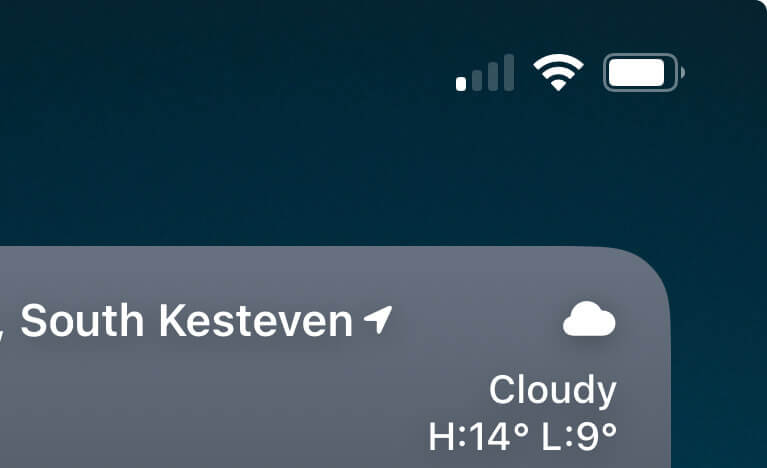In today’s hyper-connected world, reliable mobile connectivity isn’t just a convenience; it’s a necessity. Yet, despite the growing reliance on mobile data for everything from work to personal life, Lincolnshire remains a 5G “not-spot.” This lack of coverage impacts nearly every resident, affecting daily routines, limiting economic growth, and deepening the digital divide between urban and rural communities. Recently the Telegraph have picked up on this but it’s far from a new problem
The Data Behind Lincolnshire’s Connectivity Problem
A recent survey by Vodafone revealed some stark numbers for Lincolnshire:
- Lincolnshire’s seven constituencies are all 5G “not-spots,” meaning nearly every area struggles to access 5G and, in some cases, even reliable 4G. In contrast, urban areas across the UK have moved mainly past such issues.
- 883,000 people in the UK are in not-spots with no coverage at all. Rural areas comprise over half of these zones, while only 2.7% of the urban regions face similar problems.
- The city of Lincoln, with a population of 117,000, is the best-served area in the county, but even here, 96% of the district experiences partial connectivity issues. No location in Lincolnshire has consistent 5G coverage.
- In the Boston and Skegness constituency, 46% of the area is a complete not-spot, with the remaining half covered by unreliable signals.
- South Holland and the Deepings remain stuck in 4G, while places like Sleaford and North Hykeham see just over 40% of their area classified as a full not-spot for mobile connectivity.
National Context and Where the UK Falls Short
This isn’t just a Lincolnshire issue—UK mobile connectivity is lagging on the world stage. According to Ookla, the UK ranks 49th globally in mobile speeds, far behind other developed nations, including France and the United States. Average download speeds in London, supposedly one of Europe’s top cities, are just over half of what users enjoy in Munich.
This poor standing reflects a national issue of insufficient investment. More than 10 billion gigabytes of data crossed UK mobile networks in 2023. Yet, only a fraction of these connections used 5G, with the majority still dependent on 4G, a technology over 12 years old. This lagging infrastructure is partly due to a slow 5G rollout and setbacks from the government’s decision to ban Huawei technology in 5G networks, which has forced telecom companies to replace already installed equipment at significant cost and delay.
Why Lincolnshire Suffers More Than Most
Several factors contribute to Lincolnshire’s severe connectivity challenges:
- Rural Landscape: Lincolnshire’s vast rural areas face significant connectivity issues. Rolling out infrastructure like 5G masts in these areas is costly and sometimes meets strong local opposition due to perceived visual or environmental impacts.
- Limited 5G Investment: Nationally, investment in 5G infrastructure has lagged behind demand. Operators are scrambling to keep up with data usage that rose 24% last year alone. However, the high cost of 5G rollouts and delayed benefits for rural areas mean that investments often prioritize dense urban areas first.
- Planning Restrictions and Local Opposition: Lincolnshire has faced considerable opposition to new 5G masts, especially in areas of natural beauty or near historic sites. Concerns over aesthetics and wildlife impact have led to slow planning approvals, delaying much-needed infrastructure improvements.
Impact on Lincolnshire Residents and Economy
For Lincolnshire residents, poor connectivity isn’t just an inconvenience; it’s a barrier to economic and social participation. Here’s how the lack of reliable 4G and 5G affects our county:
- Economic Limitations: Poor connectivity hinders businesses, especially in agriculture, logistics, and tourism, which rely on stable communication networks for operations, customer service, and remote monitoring. Rural areas can’t participate fully in the digital economy without stable mobile data, reducing job opportunities and economic growth.
- Education Access: With unreliable internet, students and remote learners in Lincolnshire often struggle to access online educational resources, falling behind peers in more connected regions.
- Emergency and Healthcare Services: Mobile connectivity is crucial for emergency services, especially in rural areas. Lincolnshire’s patchy network can lead to delayed response times and impact health services that rely on telemedicine.
- Social Isolation: Many residents, especially older people, rely on mobile connectivity to stay in touch with family and friends. A lack of reliable mobile signal exacerbates social isolation, particularly in remote parts of the county.
Steps Forward: What Needs to Change?
While proposals to install more 5G masts across Lincolnshire are on the table, overcoming opposition and bureaucratic hurdles is essential to see real progress. Additionally, recent moves by the Competition and Markets Authority (CMA) to approve the merger of Vodafone and Three offer some hope. If the deal goes ahead, this merger could bring a significant investment boost, with the companies pledging £11 billion to improve 5G infrastructure. The resulting network improvements could extend coverage to underserved rural areas like Lincolnshire, benefiting residents and businesses.
To close the digital gap, Lincolnshire requires a tailored approach:
- Improved Planning and Consultation: Engaging communities early to address concerns and clarify the benefits of enhanced connectivity could help ease opposition to new infrastructure.
- Investment in Rural Connectivity Solutions: Mobile companies and the government should consider targeted investment in Lincolnshire’s rural zones, ensuring the county receives a fair share of network upgrades and 5G deployment.
- Alternative Technologies: Beyond 5G, options like satellite internet or private wireless networks could temporarily solve connectivity issues in remote areas.
Final Thoughts
Lincolnshire’s connectivity challenges reflect a broader issue of rural digital inequality in the UK. Like many rural areas, our county is being left behind in the digital age, with real-world consequences for residents’ livelihoods, safety, and quality of life. Solving this issue requires a combined effort—investment from telecom companies, supportive policies from the government, and community support for infrastructure that brings Lincolnshire up to speed with the rest of the country.
The time for action is now. With data demand continuing to grow, leaving rural areas to languish in connectivity “not-spots” is a decision we simply cannot afford.
